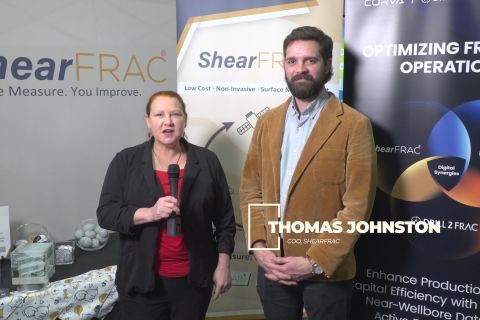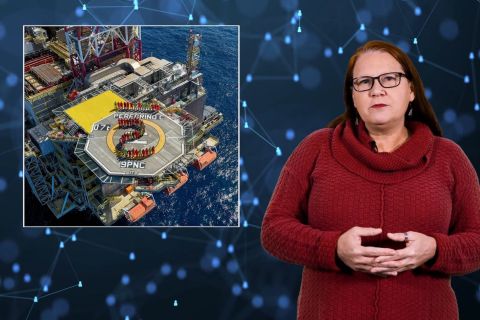Occidental Petroleum will only weigh divestment of non-core Permian Basin assets after its $12 billion deal with CrownRock LP eventually closes.
Infrastructure may be a different story. Reports emerged on Feb. 20 that Occidental is considering a sale of its interests in Western Midstream Partners, an infrastructure company valued at roughly $20 billion, according to Reuters.
“By virtue of all the M&A that’s happening, there’s a lot of appetite for companies to try to get into the Permian and we do have properties in the Permian that are not core to us but could be core to others and some of it just where they’re placed in the Permian geographically,” Vicki Hollub, Occidental’s president and CEO, said during the company’s Feb. 15 quarterly earnings webcast.
The cash and stock acquisition of CrownRock, announced in December, is anticipated to close in first-quarter 2024.
“The divestitures, I believe, will go well,” Hollub said. “What we won’t do, though, is we’ve decided not to make any divestitures until we close the CrownRock acquisition and then we’ll start a proactive process more aggressively at that point.”
But reports that Occidental is exploring the sale of its share of Western Midstream Partners — the company owns a 49% stake — could generate substantial proceeds to reduce debt. Occidental ended 2023 with long-term debt of $18.5 billion. That doesn’t include the $1.2 billion CrownRock debt Occidental will assume when the deal closes. Occidental is leaning on $9.1 billion in new debt and $1.7 billion in common equity to finance the deal.
RELATED
Which Occidental Assets Will Hit Chopping Block After $12B CrownRock Deal?
In terms of material deals to come after Occidental closes the CrownRock deal, Hollub ruled that out last week.
“Anything that’s material, we wouldn’t likely do,” Hollub said. “We’re trying to minimize the cash flows sold to ensure that we can maintain our cash flow. With that said, there will be some cash flow going, because it’s hard to sell any assets out here that we haven’t already at least done appraisal work on to generate some cash flow.”
Hollub classified the CrownRock acquisition as strategic since it added “high-margin, low-break-even inventory,” she said during the webcast as part of her prepared remarks. Hollub said incremental cash flow would be used to support Occidental’s plan to deliver a sustainable and growing dividend with deleveraging and share repurchases after reducing the company’s debt to $15 billion.
Occidental aims to repay $4.5 billion in debt within 12 months of transaction close and eyes $4.5 billion to $6 billion of after-tax divestiture proceeds to be realized within 18 months of transaction close, Occidental said when it announced the CrownRock acquisition.
TD Cowen’s investment thesis on Occidental sees the producer benefitting from multi-year de-leveraging efforts. An attractive asset base is expected to “deliver outsized returns of capital to shareholders in the coming years, supported by a superior asset base in the Permian, DJ [Denver-Julesburg Basin], GOM and international, in addition to value enhancing opportunities via Occidental Low Carbon Ventures,” analysts wrote in a Feb. 15 report.
Hollub said Occidental was working constructively with the U.S. Federal Trade Commission (FTC), which is reviewing the CrownRock deal. Occidental CFO Sunil Mathew said additional requests from the FTC would impact the timing of the closing. However, he said Occidental still expects to receive regulatory approval and close the acquisition later this year.
“While total shareholder returns are likely to decline nearer-term to focus on debt repayment, we forecast the payout by 2026 (or sooner) should be better than ever,” Truist Securities wrote in a Feb. 15 research report.
Debt reduction priority
Occidental aims to use its excess cash flow to reduce long-term debt as it looks to rebalance its enterprise value to the liking of common shareholders, according to recent financial details revealed by company executives.
Occidental’s debt reduction will target lowering expenses and improving the balance sheet.
“Once we get our debt back down to $15 billion, that’s going to be a key part of helping us then to start the resumption of a more robust share purchase program of both the common and ultimately the preferred,” Hollub said.
“We’re going to accumulate cash flow as we continue to work toward closing the CrownRock deal, because a part of cash flow will be used to help pay down both the term loan and our debt maturities that are coming. So, cash flow would not be used for share repurchases until we get to the point where we’ve achieved those goals,” Hollub said.
Occidental remains focused on its sustainable and growing dividend, while its share repurchase plan supports capital appreciation and per-share dividend growth, executives said.
“Post CrownRock the Occidental game theory has become harder. We had been convinced the cycle of free cash flow generation plus preferential pay down would leave shareholders disadvantaged over a longer period,” Evercore ISI analysts wrote in a Feb. 15 research report.
“With the changes to preferential redemption, now clearly pushed to end of decade (incremental debt from CrownRock the first priority) one is left with a relatively disadvantaged shareholder return vehicle and a long road to de-leveraging with an albeit better than most asset position in the global upstream,” Evercore said.
CrownRock and EOR opportunities
CrownRock adds to Occidental’s inventory in the core of the Midland Basin with a rich and understood subsurface, according to Occidental. The company also plans to expand unconventional EOR opportunities to follow on its Midland pilot success.
Over the next five years to 10 years, EOR will be a significant part of Occidental’s portfolio development. Hollub said Occidental had 2 Bbbl of resources remaining to be developed and that its Direct Air Capture (DAC) facilities, which will remove CO2 from the atmosphere, would result in “the most sustainable barrels in the world.”
“We have high-quality, short-cycle, high-return oil and gas shale development in the U.S., along with conventional, lower-decline oil and gas development in Permian EOR, GoM, Oman, Algeria and Abu Dhabi,” Hollub said in her opening remarks. “These developments are complemented by our strong and stable cash flow from our chemicals business and the cash flow and carbon reduction we expect our low-carbon ventures to provide in the future.”
In 2024, Occidental is eyeing capex between $5.8 billion and $6 billion. The bulk of the spending — between $2.5 billion and $2.7 billion — will flow into the Permian Basin, where Occidental will run 10 net rigs. Capex for low-carbon ventures is expected to be $0.6 billion.
For the year, Occidental expects oil and gas production of between 1.2 MMboe/d and 1.3 MMboe/d, dominated by the Permian (expected to account for 47% of total production), the Rockies (24%), Gulf of Mexico (11%) and international (18%). That compares to average production of 1.2 MMboe/d in 2023.
Recommended Reading
Well Logging Could Get a Makeover
2024-02-27 - Aramco’s KASHF robot, expected to deploy in 2025, will be able to operate in both vertical and horizontal segments of wellbores.
ShearFRAC, Drill2Frac, Corva Collaborating on Fracs
2024-03-05 - Collaboration aims to standardize decision-making for frac operations.
E&P Highlights: March 11, 2024
2024-03-11 - Here’s a roundup of the latest E&P headlines, including a new bid round offshore Bangladesh and new contract awards.
Tech Trends: SLB's Autonomous Tech Used for Drilling Operations
2024-02-06 - SLB says autonomous drilling operations increased ROP at a deepwater field offshore Brazil by 60% over the course of a five-well program.
Tech Trends: Halliburton’s Carbon Capturing Cement Solution
2024-02-20 - Halliburton’s new CorrosaLock cement solution provides chemical resistance to CO2 and minimizes the impact of cyclic loading on the cement barrier.






